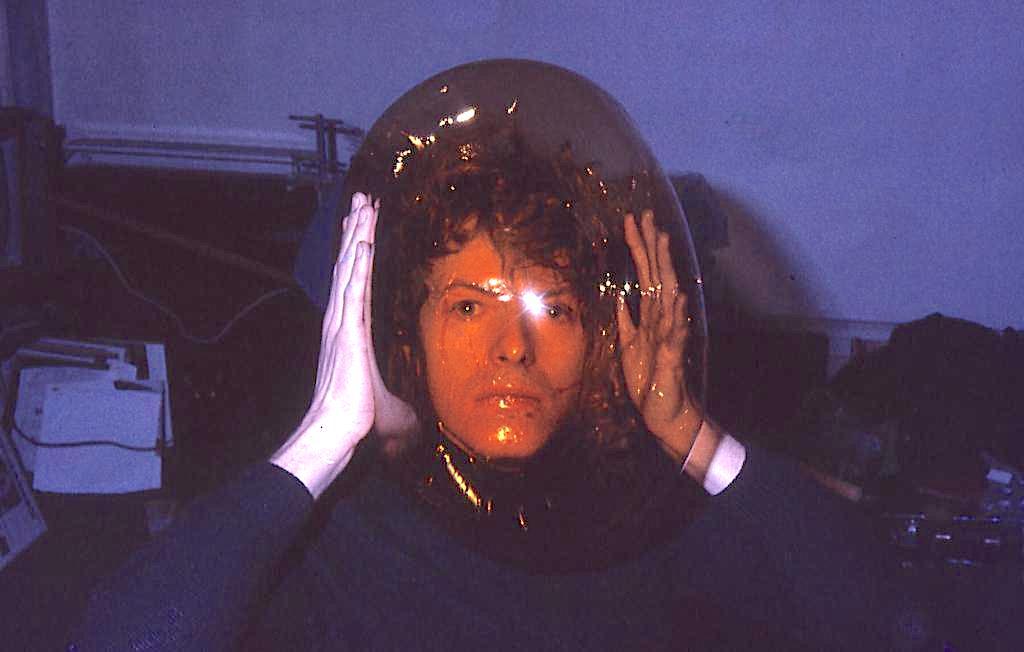Even the most ardent Bowie fan might dismissively sum up their idol's pre-fame years with just these three words: The Laughing Gnome. And so it's hardly surprising that the director of Bowie: Finding Fame, Francis Whately (who also made David Bowie: Five Years and David Bowie: The Last Five Years), found himself wondering if there was enough meat on this particular bone for another 90 minutes' worth of enlightening information and entertainment.
But he needn't have worried. The Bowie he uncovered turned out to be just as compulsive in his greed for creating identities, just as keen to move on from one musical style to the next, and just as difficult to pin down as a flesh and blood human being as any of the man’s later incarnations.
 Actually no, scrap that last point. Whately arguably does get closer to who the flesh and blood David Jones really was than anyone has previously, largely thanks to securing interviews with an elusive cousin and a just as elusive first love. These two charming women, speaking to camera about Bowie for the first time, gave us a glimpse of the boy and the young man as a playful but deeply insecure individual motivated by an overriding need for fame and escape from his oppressive suburban home (pictured above, David Jones circa 1965).
Actually no, scrap that last point. Whately arguably does get closer to who the flesh and blood David Jones really was than anyone has previously, largely thanks to securing interviews with an elusive cousin and a just as elusive first love. These two charming women, speaking to camera about Bowie for the first time, gave us a glimpse of the boy and the young man as a playful but deeply insecure individual motivated by an overriding need for fame and escape from his oppressive suburban home (pictured above, David Jones circa 1965).
Cousin Kristina Amadeus recalls young Master Jones regularly amusing her by donning a flowerpot to mimic The Flower Pot Men (a popular children’s TV series at the time). And ballet dancer and girlfriend Hermione Farthingale rather telling describes the man she fell in love with within five minutes of meeting him as looking about eight years old: "I had to keep reminding myself he was actually twenty-one." She enigmatically concludes, "But he wasn’t lost, he just wasn’t found either."
But what of the music? Well, seeing Carlos Alomar play the riff from “The Laughing Gnome” was a laugh. But such fripperies aside, we were guided through DB’s pre-fame period – 11 years and nine separate bands – by a whole host of reliable witnesses. The documentary goes right up until Ziggy descended from the stars to save both us and David himself. Or as producer Tony Visconti so succinctly puts it: "He was the first rock star to take on a different identity. He was Ziggy Stardust by David Bowie." Friends, artists and musicians – including Woody Woodmansey, Rick Wakeman, Mike Vernon and Lindsey Kemp – speak affectionately of The Man Who Wanted the World but hadn’t yet quite worked out how to get it (pictured below, Bowie in a bubble, photographed by Tony Visconti).
 Yes, there are a couple of curious omissions. His 1969 landlady and lover Mary Finnigan could have been invited to reminisce about the Beckenham Arts Lab period (maybe she was, maybe she declined). And surely someone could have been found to talk about Bowie’s decidedly uncomfortable first meeting with Warhol (I recall Bowie at some juncture shaping it into an amusingly self-effacing anecdote which must be somewhere in the archives). But such trainspotter-ish quibbles aside, Whately should be extremely pleased with the picture he has managed to assemble from a jigsaw puzzle with at least half the pieces missing.
Yes, there are a couple of curious omissions. His 1969 landlady and lover Mary Finnigan could have been invited to reminisce about the Beckenham Arts Lab period (maybe she was, maybe she declined). And surely someone could have been found to talk about Bowie’s decidedly uncomfortable first meeting with Warhol (I recall Bowie at some juncture shaping it into an amusingly self-effacing anecdote which must be somewhere in the archives). But such trainspotter-ish quibbles aside, Whately should be extremely pleased with the picture he has managed to assemble from a jigsaw puzzle with at least half the pieces missing.
Even an expected dearth of film footage from 1964 to 1970 didn’t present any problems in the end. Whately simply keeps the screen busy with quick edits, juddering onscreen text, the layering of multiple images and various other visual devices, sometimes even going as far as to use a more "distressed" version of a clip (the 1973 Russell Harty interview for instance) to make it sit better texturally with the surrounding Super 8 footage and faded photographs. The end result is a hypnotic, multilayered work that’s never self-indulgent and always completely engaging. David Bowie: Finding Fame could stand alone as a perfect introduction to the thin white enigma. In fact it may even be the best of this admirable trilogy. It’s certainly the most touching.















Add comment